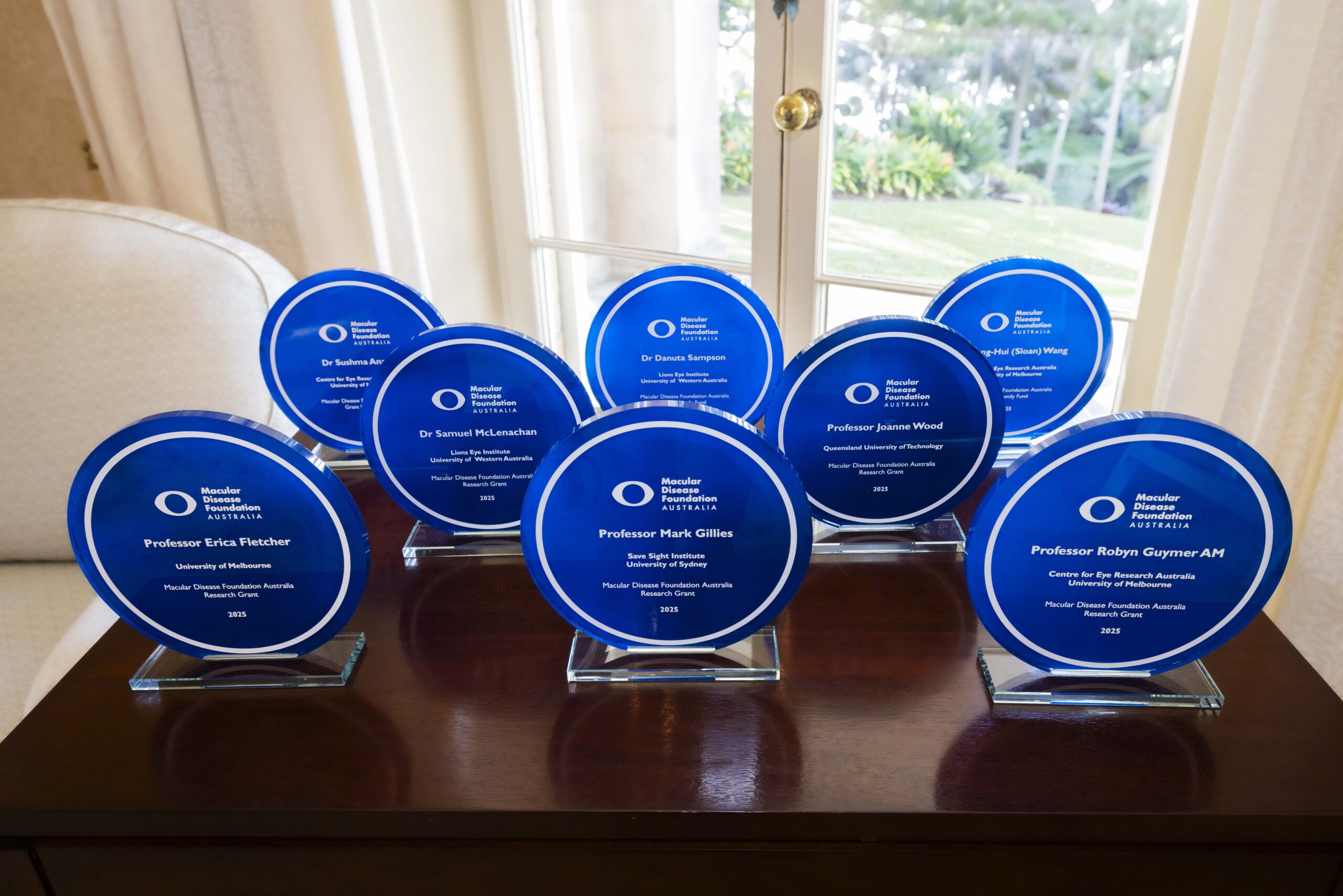Welcome change to PBS
The Macular Degeneration Foundation welcomes the Federal Government’s approval of extended listings for macular degeneration medicines on the Pharmaceutical Benefits Scheme (PBS), which will now enable switching between treatments.
The Pharmaceutical Benefits Advisory Committee (PBAC) that advises the Pharmaceutical Benefits Scheme had determined in June 2012 that switching not be allowed between either Lucentis® (ranibizumab) or Eylea® (aflibercept) and that once started on either treatment, then a patient would have to stay on that treatment.
The Foundation advocated that “switching” should be allowed between anti-VEGF drugs Lucentis (ranibizumab) or Eylea (aflibercept) and that ultimately, the decision about which drug is most appropriate and potentially beneficial to the patient should be made on the recommendation of the eye specialist in consultation with the patient.
Macular Degeneration Foundation CEO, Julie Heraghty said, “The Government’s decision on extending listings for macular degeneration medicines, which will enable switching between drugs, is a very welcome one.
“This will mean that ophthalmologists have the option to now assess patients for the most appropriate drug on an individualised basis to ensure the best outcome for the patient.”
“Most importantly, for some patients, this decision will mean fewer injections for the treatment of wet age-related macular degeneration, lessening the burden of treatment for the patient, their carers and family,” said Heraghty.
About wet age-related macular degeneration (AMD)
There are a number of medical treatments available for the treatment of AMD. These treatments do not cure the disease but aim to stabilise and maintain the best vision for as long as possible. In some people, treatment can improve vision. AMD is an excessive growth of blood vessels causing bleeding, leakage and scarring under the retina. This process results in the rapid and severe loss of central vision which, if left untreated, becomes permanent. A protein called Vascular Endothelial Growth Factor (VEGF) is predominantly responsible for the leaking and growth of the new blood vessels. To slow or stop this process various drugs that block this protein (called anti-VEGFs) may be injected into the eye. Clinical trials have shown that the use of anti-VEGF drugs maintains vision in the vast majority of wet AMD patients. Anti-VEGF drugs are administered as injections into the eye. The usual treatment regimen begins with monthly injections for three months. Then to maintain control of the disease injections must usually be continued on an indefinite basis. The interval between these ongoing injections is determined on an individualised basis by the eye specialist in consultation with the patient.
The treatments
Lucentis® (ranibizumab)
Lucentis is the first anti-VEGF drug registered in Australia for the treatment of wet age-related macular degeneration (AMD). Lucentis has been approved by the Therapeutic Goods Administration and was listed on the Pharmaceutical Benefits Scheme in August 2007.
Eylea® (aflibercept)
Eylea is an anti-VEGF drug developed for the treatment of wet AMD and was registered by the Therapeutic Goods Administration in June 2012 and has Pharmaceutical Benefits Scheme listing as of 1 December 2012.
Posted: 24 October 2012
















